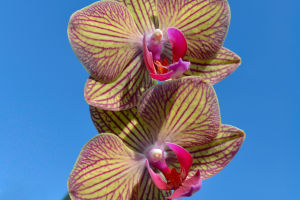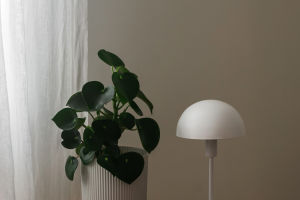The first time you see a Venus flytrap snap shut, it's like watching a scene from a sci-fi movie. But the truth is, it's only one member of a vast and quirky family of carnivorous plants.
From pitcher plants shaped like elegant vases to sticky sundews sparkling like dew-covered gems, these species have evolved creative ways to trap and digest insects.
Exploring them reveals a hidden world where plants play the role of predator.
Why Carnivorous Plants Exist
Carnivorous plants don't hunt insects because they're "aggressive." They do it to survive in poor soils where nutrients are scarce. Nitrogen, especially, is hard to come by in bogs, swamps, and acidic wetlands. By capturing insects or tiny creatures, these plants gain the nutrients they can't get from the ground. Over millions of years, this need has driven them to evolve traps as intricate as any animal's.
Beyond the Famous Flytrap
The Venus flytrap gets all the attention, but it's just one strategy among many. Here are three other types of insect-eating plants you're likely to encounter:
1. Pitcher Plants: Their leaves form deep tubes filled with digestive liquid. The rims are slippery, and some even produce sweet nectar to lure insects. Once inside, bugs slide down and can't crawl out. Pitcher plants are found on several continents, with dozens of species adapted to different climates and prey sizes. Some larger species can even handle small frogs or lizards, though insects remain their main diet.
2. Sundews: These plants look delicate, with fine hairs tipped in sticky droplets. To an insect, the droplets resemble nectar. But once it lands, the plant's hairs curl inward, slowly enveloping the prey. Sundews don't snap shut like flytraps—they're patient and steady, taking hours to complete the process. Their glistening traps can be mesmerizing in morning sunlight.
3. Bladderworts: Unlike pitcher plants and sundews, bladderworts are aquatic. They float in water and have tiny vacuum-like bladders that draw in small organisms such as water fleas. Each trap is triggered by hairlike sensors. When touched, the bladder opens, creating a quick suction that pulls in prey. It's one of the fastest movements in the plant kingdom.
How These Traps Work
All these plants share a common theme: lure, capture, digest. Some use bright colors and sweet scents to attract insects. Others, like bladderworts, rely on stealth. After trapping their prey, they secrete enzymes to break down proteins and absorb nutrients. This entire process allows them to thrive where other plants would wither.
Interestingly, not all carnivorous plants digest their meals in the same way. Pitcher plants often host bacteria in their liquid, which helps break down prey. Sundews secrete their own enzymes from the tips of their hairs. These differences show just how flexible and inventive plant evolution can be.
Tips for Growing Carnivorous Plants
People are often surprised to learn they can keep these plants at home. With the right care, many species thrive in pots or terrariums. If you're curious, here's how to start:
1. Choose the right species. Venus flytraps are the classic starter, but sundews and some pitcher plants are also beginner-friendly.
2. Use nutrient-poor soil. Ordinary potting mix is too rich. A mix of sphagnum moss and sand works better, mimicking their natural bog conditions.
3. Provide plenty of sunlight. Most carnivorous plants need at least six hours of direct light daily. Without it, their traps lose color and vigor.
4. Water with distilled or rainwater. Tap water often contains minerals these plants can't handle. Keeping the soil damp, not waterlogged, is key.
5. Don't overfeed. If your plant is outdoors, it'll catch its own insects. Indoors, a few small bugs every couple of weeks is enough. Overfeeding can damage the traps.
Why They Fascinate Us
Carnivorous plants blur the line between plant and animal behavior. They don't just sit and photosynthesize—they lure, move, and digest. Watching a sundew slowly curl around a fly or a bladderwort trigger its trap under water is like seeing time-lapse footage of evolution at work. It's no wonder these plants inspire artists, gardeners, and scientists alike.
They're also a reminder of how adaptable life can be. In harsh conditions, where most plants struggle, these species found a creative solution: they turned to a different food source. Their traps may look alien, but they're really just specialized leaves, repurposed for survival.
Taking a Closer Look
Next time you see a Venus flytrap at a garden shop, remember it's just the beginning of a much larger story. Sundews glisten in bogs, pitcher plants stand like colorful chalices, and bladderworts snap prey underwater in a blink. Together, they form a rich tapestry of adaptation and ingenuity.
If you ever get the chance, visit a bog or wetland preserve with a guide who knows where these plants grow. Seeing them in their natural setting—tiny predators hidden among moss and reeds—makes you appreciate not just their beauty but their cleverness. It's a quiet, patient world, but one that rewards close attention.
Carnivorous plants beyond the Venus flytrap show that nature's imagination knows no bounds. Their strange traps and unexpected behaviors offer a glimpse into evolution's workshop, where survival drives innovation in the most surprising ways.


